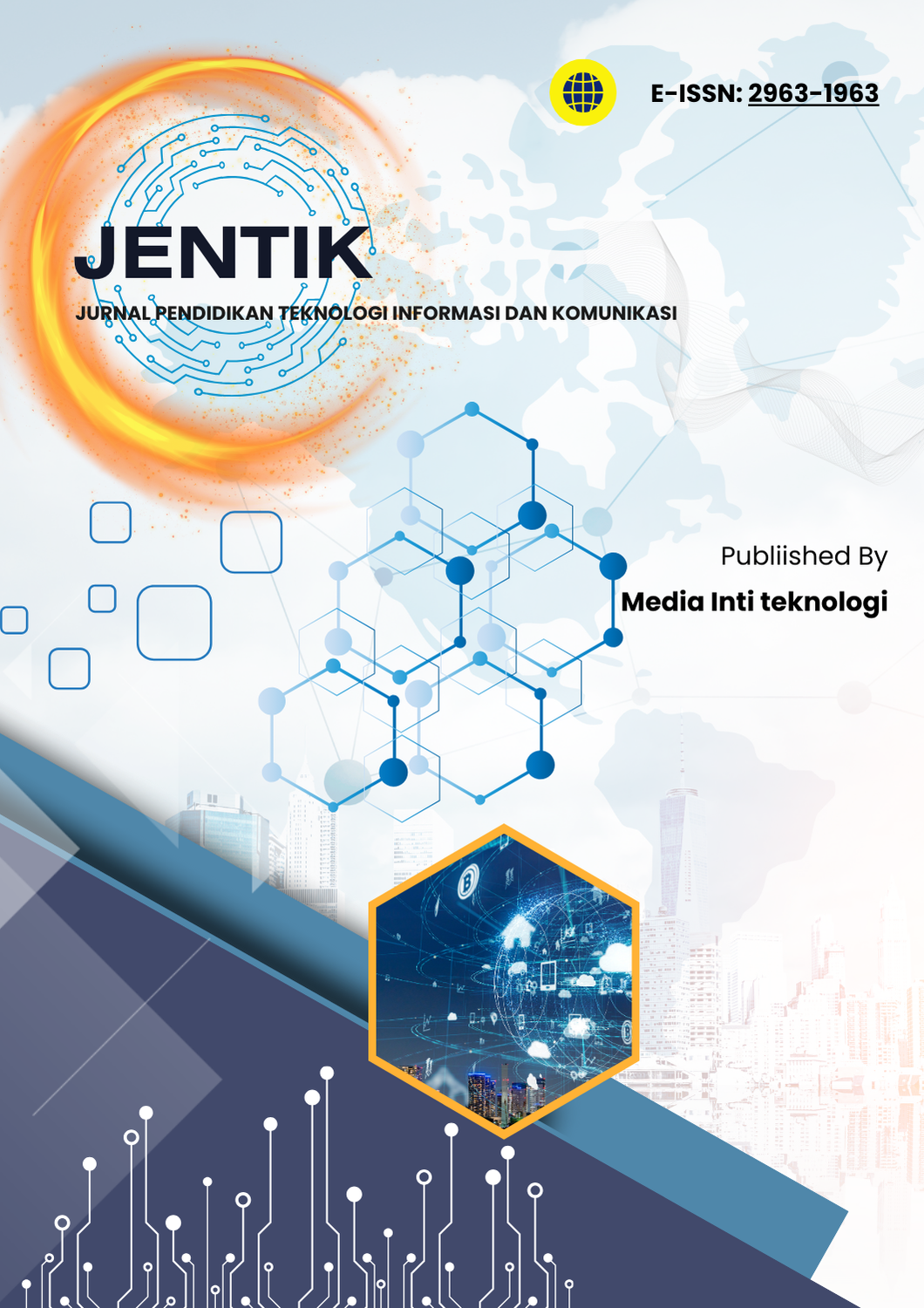Development of Interactive Learning Media on Light Vehicle Engine System Based on Classpoint to Improve Student Learning Achievement (A Study on Light Vehicle Engine System Components for Grade XI Students at SMK Negeri 3 Seluma)
Main Article Content
Abstract
Background of study: The low academic achievement of students in understanding the elements of light vehicle engine systems, particularly in the subject of engine management systems (EMS) at SMK Negeri 3 Seluma, is caused by the lack of use of interactive learning media that are interesting and suited to the characteristics of the students. Therefore, there is a need to develop innovative and interactive learning media to improve student academic achievement.
Aims and scope of paper: This research aims to develop ClassPoint-based interactive learning media on engine management system (EMS) materials and test the feasibility and effectiveness of these media in improving student learning achievement. The scope of the research is focused on grade XI TKR students at SMK Negeri 3 Seluma on the competence of light vehicle engineering regarding the elements of the light vehicle engine system.
Methods: The research method uses a Research and Development (R&D) approach with the ADDIE (Analysis, Design, Development, Implementation, Evaluation) development model.
Results: The results of the study showed that the ClassPoint-based learning media developed was declared very feasible based on the results of validation of material experts, media experts, and positive responses from teachers and students with an overall media feasibility assessment of 92.87% with an average percentage of 92.87%. In addition, the results of the effectiveness test showed a significant increase in student learning achievement, which was evidenced by the comparison of pretest and posttest scores between the experimental class and the control class using the t test with the result t calculated = 2.730 > t table = 1.995 (N=69, α=0.05).
Conclusion: The conclusion of this study is that ClassPoint-based interactive learning media is effective and feasible to be used as a learning tool in engine management system (EMS) materials to improve student learning achievement.
Downloads
Article Details
Copyright (c) 2025 Sofian Hadi, Johanes Sapri, Eko Risdianto

This work is licensed under a Creative Commons Attribution-ShareAlike 4.0 International License.
References
Abdelrady, A. H., & Akram, H. (2022). An Empirical Study of ClassPoint Tool Application in Enhancing EFL Students’ Online Learning Satisfaction. Systems, 10(5), 1–14. https://doi.org/10.3390/systems10050154
Akram, H., & Abdelrady, A. H. (2025). Examining the role of ClassPoint tool in shaping EFL students’ perceived E-learning experiences: A social cognitive theory perspective. Acta Psychologica, 254, 1–12. https://doi.org/10.1016/j.actpsy.2025.104775
An’navi, S., & Sukartono. (2023). Problematika Guru dalam Menggunakan Media IT pada Pembelajaran Siswa Kelas 4 Sekolah Dasar. Cetta: Jurnal Ilmu Pendidikan, 6(3), 516–527. https://doi.org/10.37329/cetta.v6i3.2592
Ani Daniyati, Ismy Bulqis Saputri, Ricken Wijaya, Siti Aqila Septiyani, & Usep Setiawan. (2023). Konsep Dasar Media Pembelajaran. Journal of Student Research, 1(1), 282–294. https://doi.org/10.55606/jsr.v1i1.993
Azmi, S., Sripatmi, Junaidi, & Wahidaturrahmi. (2024). Pengembangan Media Pembelajaran Interaktif Powerpoint Berbasis Classpoint pada Materi Matematika SMP. Mandalika Mathematics and Education Journal, 6(1), 384. https://doi.org/10.29303/jm.v6i1.7267
González‐pérez, L. I., & Ramírez‐montoya, M. S. (2022). COMPETENCIES TYPES (LEARNING SKILLS, LITERACY SKILLS, LIFE SKILLS) Components of Education 4.0 in 21st Century Skills Frameworks: Systematic Review. Sustainability (Switzerland), 14(3), 1–31. https://doi.org/10.3390/su14031493
Hassan, I. U., Panduru, K., & Walsh, J. (2024). An In-Depth Study of Vibration Sensors for Condition Monitoring. Sensors, 24(3), 2–33. https://doi.org/10.3390/s24030740
Kandia, I. W., Suarningsih, N. M., Wahdah, W., Arifin, A., Jenuri, J., & Suwarma, D. M. (2023). The Strategic Role of Learning Media in Optimizing Student Learning Outcomes. Journal of Education Research, 4(2), 508–514. https://doi.org/10.37985/jer.v4i2.193
Kartika, H. A., Purwanto, A., & Risdianto, Ek. (2024). Development of Physics E-Books Assisted by Flipbook and Augmented Reality (AR) to Increase Learning Motivation of High School Students. Asian Journal of Science Education, 6(1), 70–81. https://doi.org/10.24815/ajse.v6i1.36294
Kusumastuti, D. E., Damastuti, E., & Susanti, D. J. (2025). Development of Project-Based Learning Model Assisted by Mobility Orientation Technique Application ( ATOM ) for Students with Hearing Impairments. Al-Ishlah: Jurnal Pendidikan, 17(2), 2246–2260. https://doi.org/10.35445/alishlah.v17i2.6790
Maharani, P., & Putri, D. H. (2024). Developing Interactive Learning Media Using Powtoon to Improve Students ’ Interest and Learning Outcomes in Global Warming Material. Indonesian Journal of Elearning and Multimedia, 3(3), 90–99. https://doi.org/10.58723/ijoem.v3i3.288
Martinić-Cezar, S., Jurić, Z., Assani, N., & Račić, N. (2025). Controlling Engine Load Distribution in LNG Ship Propulsion Systems to Optimize Gas Emissions and Fuel Consumption. Energies, 18(3). https://doi.org/10.3390/en18030485
Nurhayati, R., MoHa, L., & Fiidznillah, R. (2024). The Role of Online Learning Media in Increasing Student Achievement and Learning Motivation. Journal Emerging Technologies in Education, 2(3), 289–297. https://doi.org/10.70177/jete.v2i3.1226
Purwanto, A., & Risdianto, E. (2022). Analisis Kebutuhan Pengembangan Bahan Ajar Digital Matakuliah Geofisika Berbasis Platform Lms Moodle Untuk Menunjang Implementasi Kurikulum Mbkm. Jurnal Kumparan Fisika, 5(1), 7–14. https://doi.org/10.33369/jkf.5.1.7-14
Rhiyanto, D. F. P., & Rachmadiarti, F. (2023). Pengembangan Media Pembelajaran Powerpoint Interaktif Add-Ins Classpoint Materi Bioteknologi untuk Meningkatkan Motivasi Belajar pada Peserta Didik Kelas XII SMA/MA. Berkala Ilmiah Pendidikan Biologi (BioEdu), 12(2), 452–465. https://doi.org/10.26740/bioedu.v12n2.p452-465
Sayyad, R., Hande, S., & Tayde, A. (2025). ” Intelligent Engine Management System for Fuel Efficiency and Emission Control ”. International Journal of Science, Engineering and Technology, 13(2), 1–6. https://doi.org/10.61463/ijset.vol.13.issue2.319
Septiawati, R., & Trisnawati, N. (2023). The Influence of Learning Readiness and Learning Motivation on Student Achievement in MPLB Basics Subject. Jurnal Pendidikan Administrasi Perkantoran (JPAP), 11(2), 125–137. https://doi.org/10.26740/jpap.v11n2.p125-137
Silva-Jean, M. da, & Kneippb, J. M. (2024). “Social learning, innovation, and sustainability: The search for directions beyond a systematic literature review.” Heliyon, 10(7), 1–12. https://doi.org/10.1016/j.heliyon.2024.e28431
Wao, Y. P., Priska, M., & Peni, N. (2022). Persepsi Mahasiswa Terhadap Penggunaan Media Pembelajaran Interaktif Classpoint Pada Mata Kuliah Zoologi Invertebrata. Jurnal Inovasi Pembelajaran Biologi, 3(2), 76–87. https://doi.org/10.26740/jipb.v3n2.p76-87
Wibowo, S., Wangid, M. N., & Firdaus, F. M. (2025). The relevance of Vygotsky’s constructivism learning theory with the differentiated learning primary schools. Journal of Education and Learning, 19(1), 431–440. https://doi.org/10.11591/edulearn.v19i1.21197
Zahwa, F. A., & Syafi’i, I. (2022). Pemilihan Pengembangan Media Pembelajaran Berbasis Teknologi Informasi. Equilibrium: Jurnal Penelitian Pendidikan Dan Ekonomi, 19(01), 61–78. https://doi.org/10.25134/equi.v19i01.3963



 Sofian Hadi
Sofian Hadi
